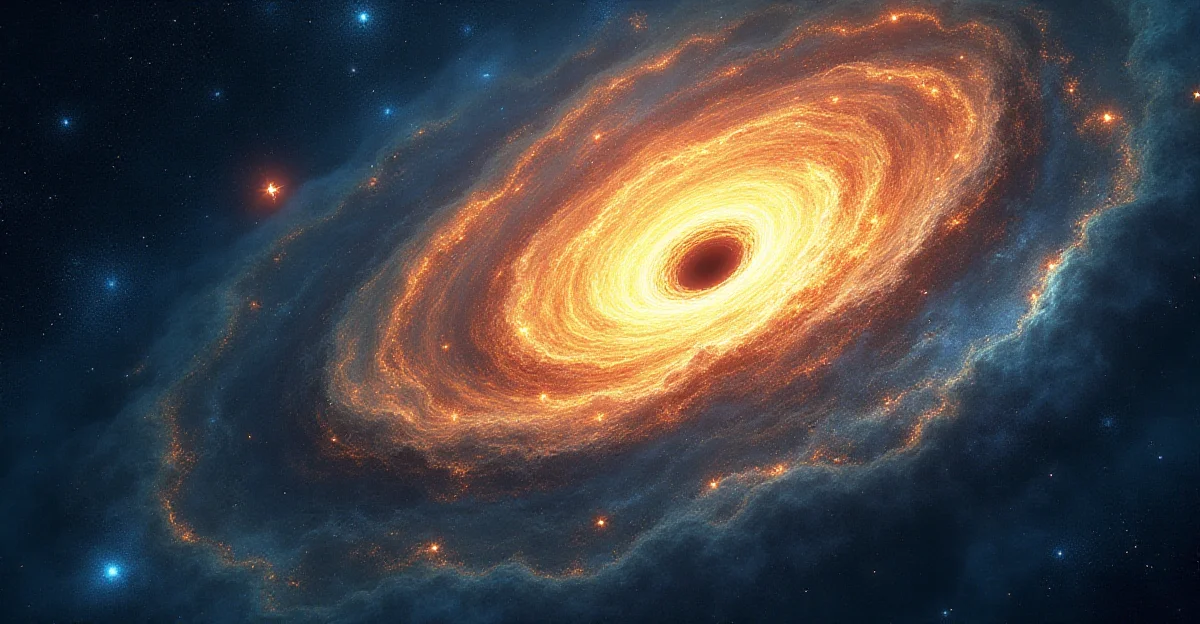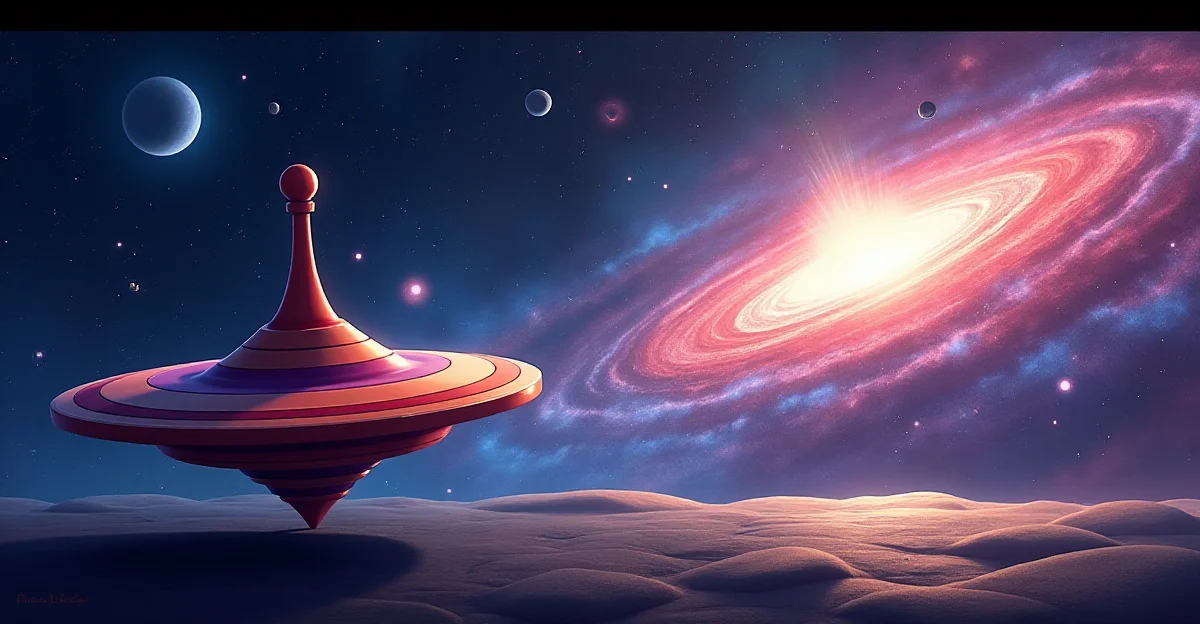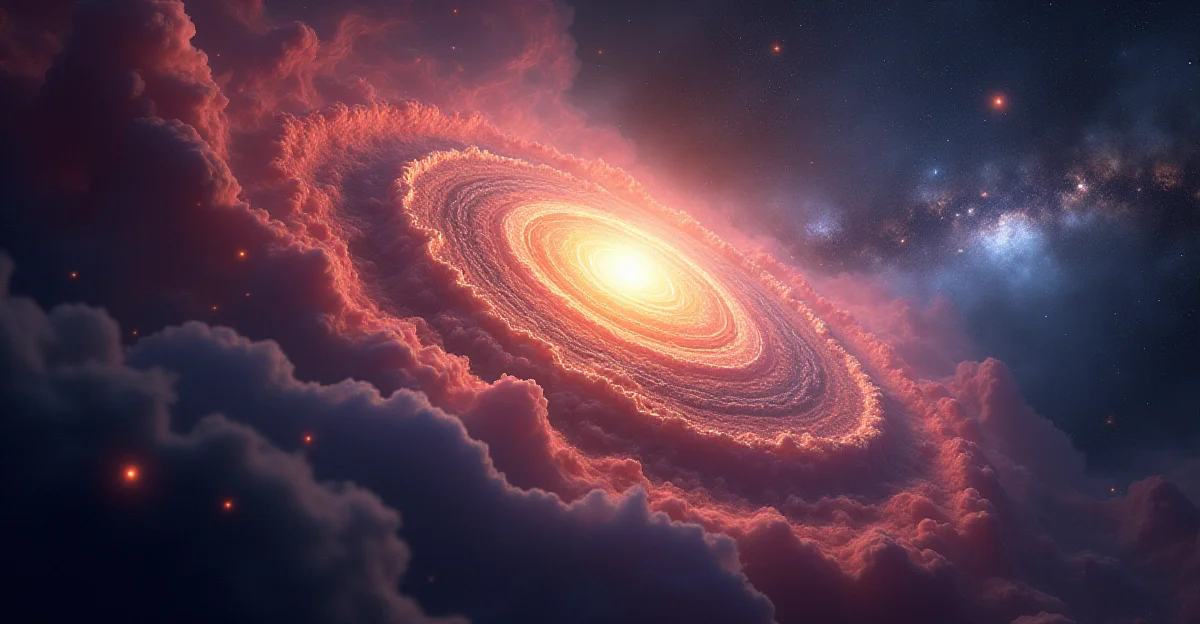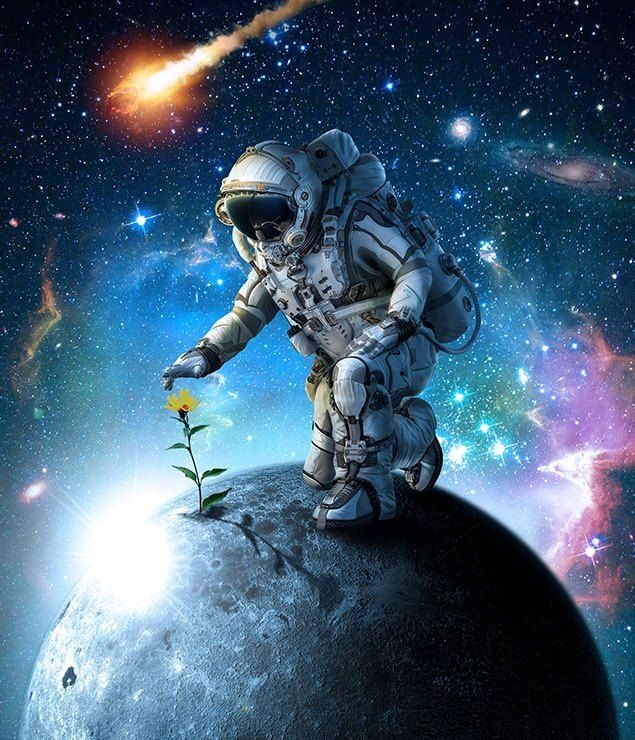Spinning Through Space: Why Celestial Bodies Rotate

Why does everything in the universe spin?
Rotational motion plays a fundamental role in shaping the cosmos-from planets and stars to galaxies and black holes. This paper explores the physics behind rotational motion, including the principles of angular momentum conservation and the influence of collisions and cosmic explosions in generating spin. Drawing from personal experiences in astronomy and a deep passion for the night sky, we delve into why rotation is so common among celestial bodies and how it connects to key events in the universe’s history.
The Science Behind Rotational Motion

Ever watched a spinning top and wondered how it keeps going? Or looked up at the night sky and noticed how stars, planets, and galaxies all appear to be in constant motion? Rotational motion is a fundamental feature of our universe-a captivating phenomenon governed by the elegant laws of physics. Let’s dive into the science that drives this cosmic spin.
How the Spin Began
The universe began in an extremely hot, dense state, then expanded and cooled, allowing matter to clump together under the force of gravity. Through collisions and cosmic interactions, these clumps eventually formed the stars, planets, and galaxies we see today. The conditions of the early universe set the stage for the rotational motion we now observe in celestial bodies.
Understanding Rotational Motion
Rotational-or angular-motion is the movement of an object around a fixed axis. The rotation of celestial bodies across the vastness of space isn’t random; it’s governed by fundamental physical principles. One of the most important is the conservation of angular momentum, which states that in a closed system, total angular momentum remains constant.
Think of an ice skater spinning: when they pull their arms in, they spin faster. That’s because reducing their moment of inertia increases their angular velocity-without changing their overall angular momentum. The same principle applies on a cosmic scale.
Explosions and Collisions: Catalysts for Cosmic Rotation
Many stars, galaxies, and planetary systems are born from dramatic cosmic events-collisions, mergers, and supernovae. These events impart angular momentum to surrounding matter. As this matter collapses under gravity, its initial angular momentum is conserved, resulting in rotation.
Take a supernova, for example-the explosive death of a star. The blast can transfer angular momentum to nearby gas and dust, setting it in motion. Over time, this rotating material can collapse into a new star or even a solar system.
A Universe in Motion
So the next time you gaze at the night sky, remember: those spinning planets and glowing stars are not just beautiful-they are proof of the deep physical laws that govern our universe. The mesmerizing rotation of celestial bodies is a direct result of both the universe’s earliest conditions and the powerful forces that shaped its evolution.

Imagine gazing up at the night sky, captivated by the elegant cosmic ballet-celestial bodies spinning gracefully across the heavens. Why do they rotate, you might wonder? The answer lies in the universe’s turbulent past-shaped by violent, high-energy events like supernova explosions and galactic collisions that serve as catalysts for the rotational motion we observe today.
The Universe Spins on Angular Momentum
At the heart of this cosmic motion is angular momentum, a fundamental physical property that governs rotational motion. Picture a figure skater spinning: as they pull their arms inward, their moment of inertia decreases, causing them to spin faster-while their total angular momentum remains unchanged. Celestial bodies follow the same principles. Their rotation often originates from ancient events that transferred angular momentum, setting them into motion and shaping their evolution.
Cosmic Fireworks: Supernova Explosions
When a massive star collapses under its own gravity, it explodes as a supernova-a powerful release of energy and matter. This explosion can impart angular momentum to nearby interstellar gas and dust, setting it into motion. Like a cosmic wind, the shock wave spins up the surrounding material. Under gravity’s pull, this rotating cloud can eventually collapse into a new star or planetary system, carrying the imprint of the original star’s momentum.
Cosmic Collisions: Forging Galactic Spin
In the ever-changing cosmos, collisions between galaxies are surprisingly common. These massive interactions can redistribute angular momentum, altering the spin of the galaxies involved. Gravitational forces during the merger compress and heat the interstellar material, triggering the formation of new stars and planetary systems-and often reshaping the overall structure and rotation of entire galaxies.
A Universe in Motion
The rotational motion of stars, planets, and galaxies offers a glimpse into the dynamic and sometimes violent nature of our universe. From the fiery deaths of stars to the slow, majestic collisions of galaxies, these events are not just destructive-they’re creative forces that set the universe spinning.
So next time you look up at the night sky, remember: the beautiful dance of stars and galaxies is a legacy of cosmic turbulence-a story written in motion.
The Cosmic Spin: What Makes Celestial Bodies Rotate?

Have you ever looked up at the night sky and wondered why everything seems to be spinning? From Earth rotating on its axis to the majestic swirl of distant galaxies, rotational motion is a fundamental characteristic of the universe-responsible not only for day and night but also for shaping celestial systems. So why do celestial bodies rotate? It’s a question that has fascinated stargazers and scientists for centuries. The answer lies in the dramatic origins of the cosmos, shaped by powerful collisions, explosive events, and a key physical principle known as angular momentum.
You might be asking: What exactly is angular momentum?
It’s essentially an object’s “spinning energy.” Imagine a spinning top-its angular momentum is what keeps it rotating smoothly. In the early universe, the environment was chaotic, filled with clouds of gas and dust swirling through space. As these clouds began to collapse under the force of gravity, they naturally began to spin, gaining angular momentum-just like a figure skater spins faster when pulling in their arms.
The celestial bodies that eventually formed from these spinning clouds- planets, stars, and galaxies-inherited this motion, a phenomenon known as inherited rotation. And so, the spin we observe today is a direct legacy of the universe’s turbulent beginnings.
The Legacy of Angular Momentum: A Cosmic Inheritance
A celestial body’s spin doesn’t begin and end at its birth-it continues to evolve throughout its existence. Powerful events across the cosmos, like supernova explosions, play a vital role in shaping and transferring angular momentum.
Picture a massive star collapsing under its own gravity-triggering a supernova, one of the universe’s most violent events. The resulting shock wave acts like a cosmic wind, transferring the star’s rotational energy to the surrounding gas and dust. This spinning material, drawn together by gravity, can collapse into new stars or star systems, carrying the imprint of that original angular momentum. In this way, each generation of stars inherits the spin of its ancestors.
Cosmic Collisions: The Dance of Spin
Collisions are another key factor in the rotational dynamics of celestial bodies. From planetary impacts to galactic mergers, these cosmic encounters redistribute angular momentum in spectacular ways.
Imagine two spinning tops crashing into each other-they may bounce, merge, or transfer their rotational energy. In much the same way, when galaxies collide, their immense gravitational forces interact, altering each other’s spin and structure. These events often compress and heat gas clouds within the galaxies, triggering bursts of star formation and giving rise to new rotating systems.
A Spinning Universe
In the end, the rotational motion of stars, planets, and galaxies is a testament to the dynamic and sometimes violent history of the universe. From the chaotic beginnings of the cosmos to the explosive and interactive events that continue to shape it, rotation is a constant reminder of the forces that forged our universe.
So the next time you look up at the night sky, remember-the elegant spin of celestial bodies is not just beautiful; it’s a physical memory of countless cosmic events, passed down like a legacy through the fabric of time and space.

